Knee Joint | Medical Science Optional Notes for UPSC PDF Download
| Table of contents |

|
| Introduction |

|
| Movements |

|
| Locking & Unlocking |

|
| Ligament Injuries |

|
| Unhappy Triad / Terrible Triad |

|
Introduction
Classification - Compound synovial joint. It stands as the largest and most intricate joint in the body. Rather than being a singular joint, it represents a fusion of three joints into one.

Articular Surfaces
The knee joint is constituted by (1) the condyles of the femur, (2) the patella, and (3) the condyles of the tibia. The femoral condyles articulate with the tibial condyles beneath and posteriorly, while also engaging with the patella anteriorly.
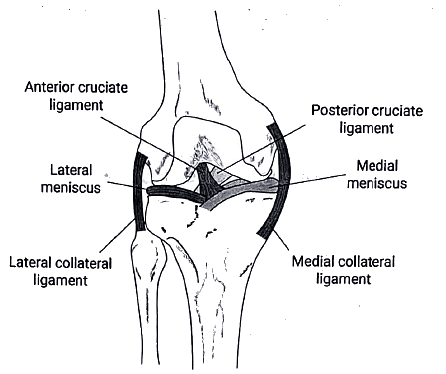
Ligament
- Support for the knee joint is provided by the following ligaments.
Fibrous Capsule
- Attached to the femur and tibia, the fibrous capsule is thin, weak, and deficient anteriorly. The segment of the capsule situated between the menisci and the tibia is referred to as the coronary ligament. Additionally, a cord-like thickening deep to the fibular collateral ligament is known as the short lateral ligament.
Tibial Collateral Ligament
- Also known as the medial ligament, it is a lengthy band that imparts considerable strength to the knee joint. It is superiorly attached to the medial epicondyle of the femur. Inferiorly, it divides into anterior and posterior parts, attaching to the medial surface of the shaft of the tibia and the medial condyle of the tibia, respectively.
Fibular Collateral Ligament
- This ligament is robust and cord-like, with its superior attachment at the lateral epicondyle of the femur. Inferiorly, it is attached to the head of the fibula.
Oblique Popliteal Ligament
- An expansion of the semimembranosus tendon.
Anterior and Posterior Cruciate Ligaments
- These are thick and robust fibrous bands responsible for maintaining the anteroposterior stability of the knee joint.
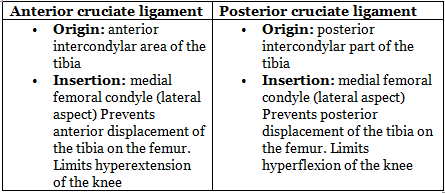
Menisci (Medial and Lateral)

Transverse Ligament:
- Connects anterior ends of the medial and lateral menisci
Ligamentum Patellar:
- Central portion of common tendon of insertion of quadriceps femoris Attached below to tibial tuberosity
Arcuate Popliteal Ligament:
- Posterior expansion from short lateral ligament of fibrous capsule
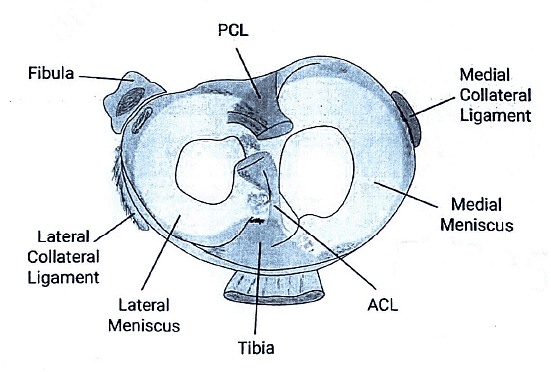
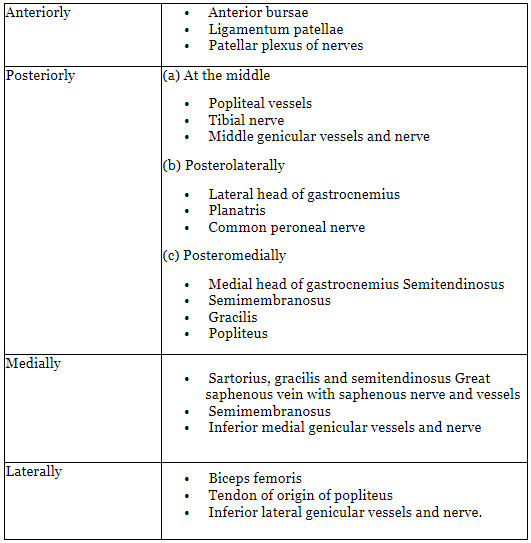
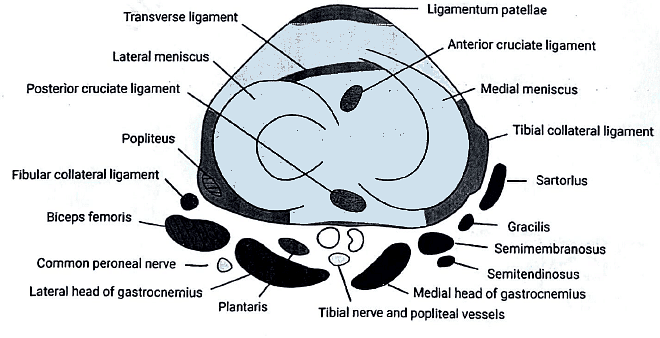
Blood Supply
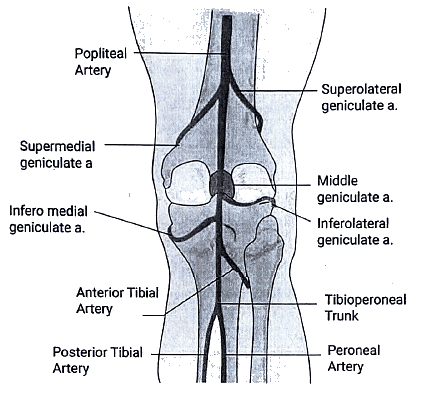
- The knee joint receives its blood supply from an anastomosis surrounding it. The principal sources of blood supply include:
- Five genicular branches of the popliteal artery
- Descending genicular branch of the femoral artery
- Descending branch of the lateral circumflex femoral artery
- Two recurrent branches of the anterior tibial artery
- Circumflex fibular branches of the posterior tibial artery
Nerve Supply
- The nerve supply to the knee joint is as follows:
- Femoral nerve (via branches to the vastus medialis)
- Sciatic nerve (through genicular branches of the tibial and common peroneal nerves)
- Obturator nerve (via the posterior division)
Movements
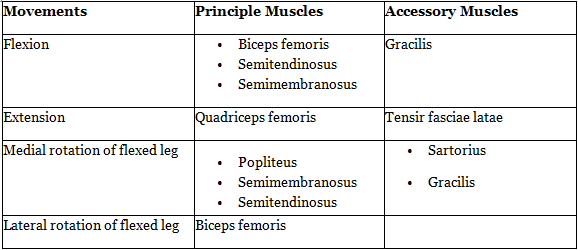
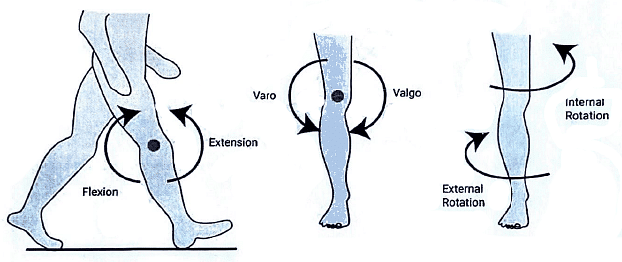
Locking & Unlocking

- The knee joint possesses inherent vulnerability, yet it gains strength from:
- Crucial Ligaments for anteroposterior stability.
- Collateral Ligaments for side-to-side stability.
- The Iliotibial Tract.
Ligament Injuries
Cruciate Ligaments (predominantly):
- Anterior
- Occurs with violent hyperextension of the knee
- Results in anterior dislocation of the tibia
- Posterior
- Leads to posterior dislocation of the tibia
Menisci:
- Medial
- Attached to the tibial collateral ligament
- Lateral
- Shielded by the popliteus muscle
- Prone to strain in a slightly flexed knee position
Collateral Ligaments:
- Medial
- Lateral
Unhappy Triad / Terrible Triad
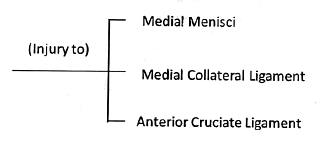

Knee Deformities
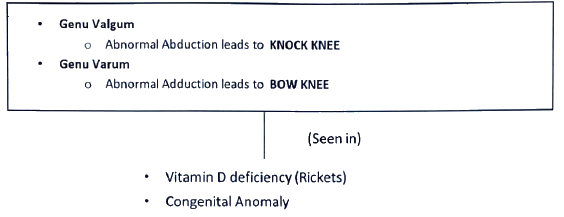
Knee joint-Repeats
- Describe briefly the movement of knee joint mentioning the role of various ligaments, menisci and muscles (1995).
- Mechanism of locking and unlocking of knee joint (1999)
- Discuss gross and applied anatomy of Knee Joint (2005)
- Give a brief account of the mechanism of locking and unlocking of knee joint. (2014)
|
7 videos|236 docs
|
FAQs on Knee Joint - Medical Science Optional Notes for UPSC
| 1. What are the movements of the knee joint? |  |
| 2. What is the difference between locking and unlocking of the knee joint? |  |
| 3. What are ligament injuries in the knee joint? |  |
| 4. What is the Unhappy Triad or Terrible Triad related to the knee joint? |  |
| 5. How can ligament injuries in the knee joint be treated? |  |




















